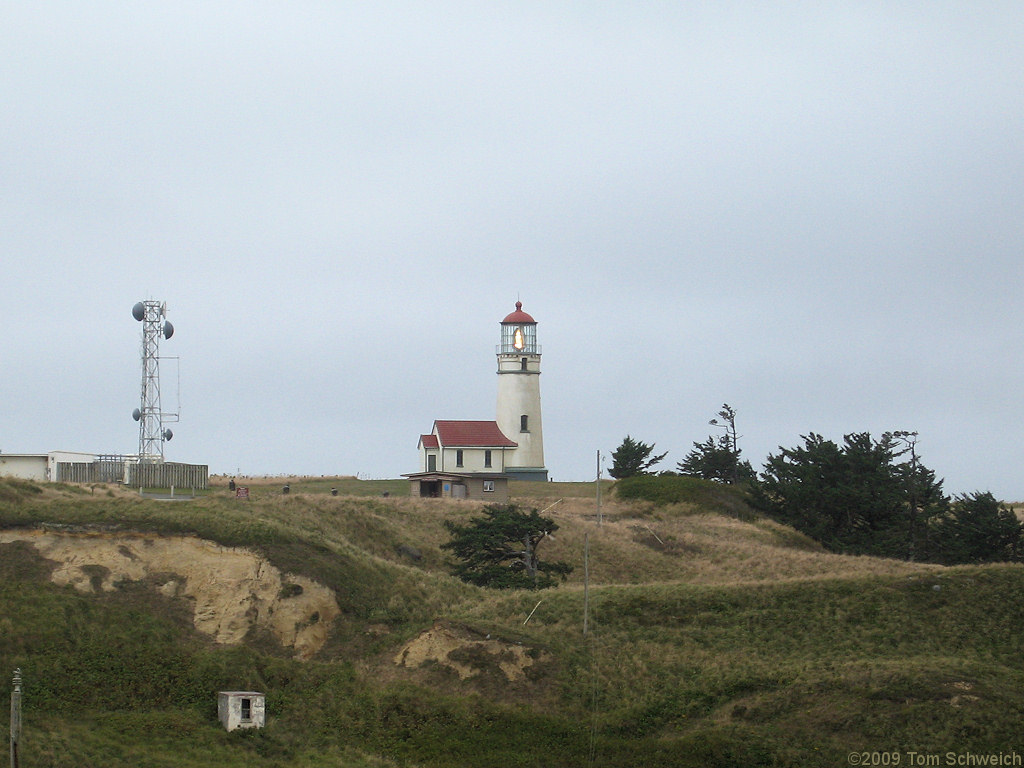 Eastern Mojave Vegetation
Eastern Mojave Vegetation
 Eastern Mojave Vegetation
Eastern Mojave Vegetation
| Cape Blanco Lighthouse |
|
|

If you have a question or a comment about this photograph you may write to me at: tomas@schweich.com I sometimes post interesting questions in my FAQ, but I never disclose your full name or address. |

Photograph taken 14 Sept 2009. The south wind was blowing very strong, and I had to get down behind a dune to take this photo. Cape Blanco Light Station was built on 47.7 acres of land. A two-family dwelling was built for keepers' quarters, with fireplaces in each room for heat. Several small buildings were constructed to house oil and other necessities. Most materials used for construction were shipped in, however, the bricks were made locally. Lt. Col. R.S. Williamson was the engineer of record; he rejected nearly 20,000 of the 200,000 bricks as inferior. Finally, the light station was completed and H. Burnap was hired as the first Keeper. On the eve of December 20, 1870, the Fresnel lens was lit for the first time. This isolated lighthouse holds at least four Oregon records: it is the oldest continuously operating light, the most westerly, it has the highest focal plane above the sea, (256 feet), and Oregonís first woman keeper, Mabel E. Bretherton signed on in March 1903. James Langlois and James Hughes were Cape Blancoís most distinguished keepers. (Hughes was the second son of Patrick and Jane Hughes, whose 2,000-acre ranch bordered the Light Station property.) They both served their entire careers at Cape Blanco, Langlois 42 years and Hughes 33 years. The keeper job included keeping the light working from sunset to sunrise. Langlois, Hughes and many other keepers for the Light-House Service diligently kept the lamps burning, and the huge Fresnel lens polished until the U.S. Coast Guard took over in 1939. The station was later automated and abandon in 1979. The last known "keeper," stationed at Cape Blanco for grounds keeping and security purposes, left in December of 1987. In early 1936, the lighthouse was electrified and the actual lens was replaced with an eight side, rotating lens, built in France by Henry-LePaute. The new lens coupled with the speed as it turned, provided a flash of light every 20 seconds. A 1,000-watt incandescent bulb replaced Cape Blancoís soot producing oil lamps of old. Gone are the keepers who spent hours polishing the magnificent lens and winding the clockworks. Today, it rotates with the help of a 120-volt, 75-rpm electric motor, specially manufactured for lighthouse duty. The electrified light flashes it's 320,000 candlepower beam, 1.8 seconds bright (flash) every 18.2 seconds.
Article records that use this photograph:
Other photos about Geography - Oregon or Curry County.
|
|
Date and time this page was prepared: 5/12/2025 3:03:49 PM |